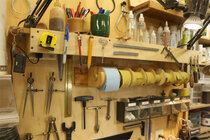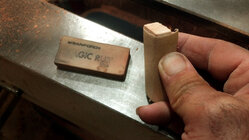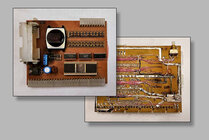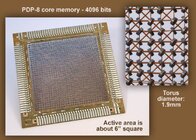-
November 2025 Turning Challenge: Wall Hanging! (click here for details) -
Sign up for the 2025 AAW Forum Holiday Swap by Monday, November 24th (click here for details) -
Congratulations to Konstantin Gusev for "The Nutcracker" being selected as Turning of the Week for November 17, 2025 (click here for details) -
Welcome new registering member. Your username must be your real First and Last name (for example: John Doe). "Screen names" and "handles" are not allowed and your registration will be deleted if you don't use your real name. Also, do not use all caps nor all lower case.
You are using an out of date browser. It may not display this or other websites correctly.
You should upgrade or use an alternative browser.
You should upgrade or use an alternative browser.
Turning a Snowman with the Skew
- Thread starter John Kananis
- Start date
Nice! I see you round the blank with the skew, just like I do - I prefer it to a roughing gouge. I like your grind on the curved skew. Do you know the included angle?
It’s easy to tell by comparing the turning with the live center and cone diameter, but some may like to know the approximate size of the blanks.(and the finish you use - is it an oil/wax like Raffan promoted?) And I see you use the same Kingspor Gold sandpaper I buy in rolls. Almost like I know you from somewhere.
(A guy at one demo wanted to measure to get the exact dimensions of what I was making - I told him sure, but it really didn’t matter, whatever size you make will be perfect!)
I like that you pointed out the point of the live center makes a great place for the hanging hardware.
It’s been a long time since I made snowmen (and little Christmas trees.) Maybe I’ll make some this year. Just need to find some wood… (Ha, I have enough dry cherry, maple and walnut to make a 100s and still not leave a dent!) I might also use some soft maple, buckeye, cedar, or basswood.
JKJ
It’s easy to tell by comparing the turning with the live center and cone diameter, but some may like to know the approximate size of the blanks.(and the finish you use - is it an oil/wax like Raffan promoted?) And I see you use the same Kingspor Gold sandpaper I buy in rolls. Almost like I know you from somewhere.
(A guy at one demo wanted to measure to get the exact dimensions of what I was making - I told him sure, but it really didn’t matter, whatever size you make will be perfect!)
I like that you pointed out the point of the live center makes a great place for the hanging hardware.
It’s been a long time since I made snowmen (and little Christmas trees.) Maybe I’ll make some this year. Just need to find some wood… (Ha, I have enough dry cherry, maple and walnut to make a 100s and still not leave a dent!) I might also use some soft maple, buckeye, cedar, or basswood.
JKJ
Hi John, I do prefer to round with the skew, it's so much more efficient unless you're doing something quite large imo and you can get right to work without switching tools. I use a 17.5° grind on a 600 grit cbn wheel and touch up with a card hone - the included angle is 35°.Nice! I see you round the blank with the skew, just like I do - I prefer it to a roughing gouge. I like your grind on the curved skew. Do you know the included angle?
It’s easy to tell by comparing the turning with the live center and cone diameter, but some may like to know the approximate size of the blanks.(and the finish you use - is it an oil/wax like Raffan promoted?) And I see you use the same Kingspor Gold sandpaper I buy in rolls. Almost like I know you from somewhere.
(A guy at one demo wanted to measure to get the exact dimensions of what I was making - I told him sure, but it really didn’t matter, whatever size you make will be perfect!)
I like that you pointed out the point of the live center makes a great place for the hanging hardware.
It’s been a long time since I made snowmen (and little Christmas trees.) Maybe I’ll make some this year. Just need to find some wood… (Ha, I have enough dry cherry, maple and walnut to make a 100s and still not leave a dent!) I might also use some soft maple, buckeye, cedar, or basswood.
JKJ
The blanks were about 2 inches x 2 inches and and 4.5 inches long. The finish I use on stuff like this is odie's oil and wax - super quick, easy and good looking. For utility pieces (like Spatulas, etc), I've found that polymerized tung oil survives the most washes, on walnut show pieces, I'm not actually the biggest fan of oil (i really like shellac with a hard wax finish on walnut), poly is great in certain cases and so is the doctors walnut oil (I'm ranting lol)... The klingspor paper I bought on your recommendation (years ago now...) and is fantastic.
And I'm glad I inspired you (in any way) to make something!!
....odie's oil and wax - super quick, easy and good looking. ...The klingspor paper I bought on your recommendation (years ago now...) and is fantastic.
And I'm glad I inspired you (in any way) to make something!!
Hey, I'm easily inspired. Maybe because my internal well of creativity is running dry as my brain ages!
Thanks for the tips. I suspect Christmas trees everywhere will have snowmen ornaments this year. For heavier woods I want to try first core drilling from the bottom with a forstner bit to make it a little lighter. (Then drive with a turned jam plug held in a chuck to turn.) Hey, maybe use a removable cork or something to plug the bottom and hid a small gift inside! I think I'll try that for some ear-rings this year (don't tell My Lovely Bride!)
One more question: you said Odie's oil and wax. Do you mean you mix Odie's Oil and Odie's Wax together or apply the oil first then the wax? I've never used Odie's but I see on Amazon they are two separate products. I feel an Amazon order comin' on.
I'm a fan of "danish" oil (poly, BLO, solvent) for some things but it takes a week or more of applying and drying for it to suit me. Fortunately, I seldom get in a hurry about anything these days!
As for the Klingspor Gold sandpaper, for those who haven't tried it, please do! I buy it in 1" and 2" rolls and keep a dispenser with both on the wall behind my lathe, just tear off a little strip as needed.

And check with Klingspor store - I think they still offer a 10% discount on almost everything to any woodturning club that signs up it's members - they last time I stocked up they still did.
And while on the subject of sandpaper, my absolute favorite for finer paper is the Indasa Rhynowet Redline:

Indasa RedLine Rhynowet Wet & Dry Sanding Sheets, 6 & 7 Series
Indasa RedLine Rhynowet Wet Dry Sanding Sheets (6 / 7 Series) premium abrasive features a waterproof, anti-slip latex backing. Long lasting cutting efficiency, high quality finish, high flexibility and longer working life time. Excellent for hand sanding all types of surfaces. Available in full...
I keep these in grits from 600 and finer. (I store the strips in the little plastic bins in the photo)
Unlike some cheaper wet/dry paper, such as the black stuff from the hardware store, the paper can be folded to get into tight places and flexed repeatedly without any grit cracking and flaking. I such a "believer" that when I do demos I sometimes hand out strips for people to try. It's kind of expensive to buy a box of each grit but it's a lifetime supply and gives plenty to share with friends!
Oh no, I can't stop!: I do a lot of sanding by hand and often use my unpatented "soft sanding block". It's a white "magic rub" eraser to back up the sandpaper. It wouldn't be useful for the snowmen ornament but great for bowls, platters, hand mirrors, etc.

Ok, I quit now...
JKJ
Don't quit, this is all good info...
The oil and wax are seperate things. In the video, I use a scratch pad (about 1500 grit) that was originally used only for applying the wax (which can be used on its own and does contain oil), which I also dipped in the oil before applying. I was just trying to be efficient there. I've tried lots of different finishes and they all have their place. I do like the odie's because it burnishes in and dries/cures quickly... truth be told, I like the way the wax smells also lol. Danish oil is great stuff (I'm partial to watco although I'm sure someone has a super secret home blend that's way better).
I keep a similar dispenser system as you do above my lathe, sandpaper and tape. And I will talk to my club about signing up for the 10% discount - great tip, thank you! I'll also look up the fine grit paper... not sure of the brands (I have it forever) but I have black, gray, green, red, yellow and orange in finer grits up to 2000 or 4000 (for electronics use, not woodworking).
The oil and wax are seperate things. In the video, I use a scratch pad (about 1500 grit) that was originally used only for applying the wax (which can be used on its own and does contain oil), which I also dipped in the oil before applying. I was just trying to be efficient there. I've tried lots of different finishes and they all have their place. I do like the odie's because it burnishes in and dries/cures quickly... truth be told, I like the way the wax smells also lol. Danish oil is great stuff (I'm partial to watco although I'm sure someone has a super secret home blend that's way better).
I keep a similar dispenser system as you do above my lathe, sandpaper and tape. And I will talk to my club about signing up for the 10% discount - great tip, thank you! I'll also look up the fine grit paper... not sure of the brands (I have it forever) but I have black, gray, green, red, yellow and orange in finer grits up to 2000 or 4000 (for electronics use, not woodworking).
And I will talk to my club about signing up for the 10% discount - great tip, thank you! I'll also look up the fine grit paper... not sure of the brands (I have it forever) but I have black, gray, green, red, yellow and orange in finer grits up to 2000 or 4000 (for electronics use, not woodworking).
Micromesh sells a couple of sets, one marketed to woodworkers, the other to small aircraft owners to restore crazed windshields (I used that on a Cessna 172 and it made it look new.) I bought both. The aircraft version used to go to 24000 grit (inappropriate for wood!) but now I to 6000 but now includes some polishing compound. The wood version has fewer grits but can't remember. Maybe that's what you use.
Curious, what do you use it for with electronics?
JKJ
I used it to lap the top of processors for better contact with the cooler (used in over-clocking the speeds for better performance/benchmarks). it was a hobby in years past.
Ah, makes perfect sense! I wondered if you were cleaning copper traces on circuit boards for soldering!!I used it to lap the top of processors for better contact with the cooler (used in over-clocking the speeds for better performance/benchmarks). it was a hobby in years past.
Just for fun...
After programming calculators for a while,I started with computers in the mid '70s with a SWTPC kit with a Motorola 6800 processor running at less than 1 MHz (they used a cheap oscillator crystal to save a $1). It came with 2K of RAM. Ok, To expand that computer, each $250 static memory board kit had 1434 solder connections and provided a massive 8K of ram! Later, upgraded to a 2MHz 6809 processor - what a screamer.
I learned to design, etch, and built boards for the computer, then some peripherals, and such. For a long time I used a refurbished teletype for I/O and - storage - it had a paper tape punch! I thought I was in heaven. Later I built a CRT and even had a graphics card - 256pixels square with 2-bit grey scale. Wow! Wrote my own "sort of" flight simulator with home-made joysticks for control. Built a D/A convertor with a stack of resistors and built a two-channel music synthesizer to play Bach 2-part Inventions. In the '70s all this was a great education in hardware, assembly language software, and even practical linear algebra! I got articles published in magazines (yes there were computer magazines in the 70s) and had more fun than was probably legal. Knew about a guy named Bill Gates and Paul Allen and their startup in the garage.
I later ('81 I think) got a genuine 4.77 MHz IBM pc, one of the first off the assembly line. Then a screaming 12MHz machine from PC's Limited (who later changes its name Dell).
I have a storage oscilloscope and some other test equipment but about all I do these days is debug and fix things as necessary. Even quit writing software. Child's play, eh?
I never got into the overclocking scene. But everything changes so fast these days, doesn't it. I just read about research advances using electron tunneling with the possibility of revolutionizing chip densities and speeds AGAIN! Yikes.
Hey, have you seen these two videos?
https://youtu.be/Fxv3JoS1uY8?si=BkxhmXfVcr6_QiEz
Even after my experiences and study of the processes over the years and then a career in scientific/technical 3D modeling/animation these both blow my little pea-sized mind.
JKJ
Last edited:
That's super cool. My first machine was in '82 - a timex Sinclair (I was 10 at the time - you have a couple years on me lol) and I got hooked. I have an office full of test equipment (including a few scopes and analyzers) that I used to really enjoy but rarely have time for any longer. Flux is plenty for cleaning copper traces and my jbc puts out enough heat that I can be a little lazy about cleaning up the old stuff.
My first computer was an Atari 800 (6502 processor). It was either '79 or '80.
Very cool, kind of like the commodore (which i had a few of as a teenager)My first computer was an Atari 800 (6502 processor). It was either '79 or '80.
Very cool, kind of like the commodore (which i had a few of as a teenager)
I went from the Atari to an NEC with dual 8" floppies. From there to NEC PCs and then eventually the IBM PC clones.
My first was a Tandy CoCo3. Cassette drive. Then we got a 486sx with windows 3.1. Living the high life then
Wow, you guys are bringing back memories. Anyone use the bbs systems back then? Kind of the original forum environment. And how about those 14.4k modems?
Wow, you guys are bringing back memories. Anyone use the bbs systems back then? Kind of the original forum environment. And how about those 14.4k modems?
I sure did! But not with a modem that fast! I built a 110 baud (0.11k) acoustic coupling modem for my ASR 33 teletype. Chunka, chunka, chunka - play "Adventure" on that thing, the only way to "display" the long room descriptions was to print them on a roll of paper...
I used a LOT of paper. But I got the used teletype for a steal, only $800!!
Oh, somewhere I've got the source code to "Adventure". And issue #1 of Byte magazine, and...
... still have the time/date clock board I built for my first computer.
I built this to eliminate the horrible chore of manually setting the time and date every time I turned the computer on.

No problem to make, just cut the back off a cheap digital watch (less than $100!), make a custom soldering iron to solder wires to the contact pads deep inside the watch (on 1mm centers), design, etch, and wire up a pc board with parallel interface circuits, make connections as necessary with wirewrap wire, then put batteries in the holder and plug into the I/O bus of the computer motherboard. To use, push the little button switch which triggered software to cycle between the digital clock display elements in the "set time" mode, sequentially read all the 7-segment LED levels, decode into numbers, then use the numbers to automatically set the time and date on the CPU card. Sure saved a lot of extra work. Ha!
Were we geeks in the '70s, or what? Good days, good fun. And lots of great soldering practice.
JKJ
John, I think it's pretty awesome that you still have pics. And I feel you on cost of components... at least back then technology moved a little slower and you got to enjoy your investment a little longer.
John, I think it's pretty awesome that you still have pics.
Actually I still have the board and never photographed it until today.
And still have punched paper tape, one of my first static memory boards that era, and an 18" hard disk platter that held 5MB... and more in my little computer museum.
I have one core memory card from a PDP-8 computer:

I was told these were assembled in rooms full of mostly women threading wires through the little ferrite donuts.
I also have a piece of delay line memory from a simple calculator almost as big as a trash compactor. (semiconductor memory didn't exist) Discrete circuits encoded numbers into physical vibrations using a magneto restrictive element, sent the vibrations down a long tube shaped as a spiral, then a sensor on the far end picked up the vibrations, amplified them, and sent them down the tube again. The circuits in the calculator could read numbers from the stream. Amazing technology. (I often bought stuff like that for cheap from gov auctions of obsolete equipment just to take them apart - the big sellers were things with lots of circuit boards and components with gold plating - people chemically extracted the gold for a big profit.) Once I bought a big industrial automated color film processor just to get the stainless steel tanks and tubes. Crazy fun times.
JKJ
